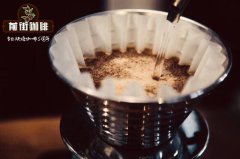Ethiopia Yega Chueh Fang Piroya G1 sun into the excellent aroma of flowers lingering

Professional coffee knowledge exchange more coffee bean information please follow the coffee workshop (Wechat official account cafe_style)
Qianjie-Ethiopia Yega Snow Biloya G1 Solar introduction
Yega Xuefei is similar to neighboring Sidamo in both cultural and geographical environment, but Yega Xuefei seems to be more favored to enjoy better conditions. with floral aroma, bright citrus acid, lemon flavor, silky taste, firmly grasp the eyes of enthusiasts, under the growth wave of the imported coffee industry. Coffee production in this area has always been the focus of buyers' attention.
"Beloya" coffee, which also belongs to Ethiopian high-altitude coffee beans, is at first the sour of blueberries and the sweetness of tropical fruits, with a hint of cocoa bitterness, and sweetness, which is as smooth and smooth as high-grade cream. if it is not the aroma of coffee, it makes people think that they are drinking scented tea.
Ethiopia Yirgacheffe is divided into sun-dried and water-washed coffee beans. The 4000-foot-high sea postscript has a fresh and bright flavor, with bright and unobtrusive aromas of flowers and fruit. Some people describe that the fruity aroma will turn into a faint strawberry fragrance, and the splendor will amaze those who first know the coffee. Yejia Coffee Coffee has an outstanding fragrance of flowers. After sun treatment, the fragrance of the beans is particularly obvious. "Biloya" will make you feel the feeling of lingering flowers.
Ethiopia Yega snow coffee Biloya G1 sun
Region: Yega Xuefei
Grade: G1
Treatment: insolation
Variety: original species (Heirloom)
Altitude: 1850m~2000m
Flavor: lemon grass, dried red jujube, longan, strawberry, juice
Knowledge: Ethiopia is in the position of meta-ancestor in the coffee industry, is the birthplace of Arabica beans (Arabica), and is currently the largest Arabica producer in Africa. The Kaffa forest in Ethiopia is more known as the "coffee gene bank".
In short: Qianjie is a coffee research hall, happy to share the knowledge about coffee with you, we share unreservedly just to make more friends fall in love with coffee, and there will be three low-discount coffee activities every month. The reason is that Qianjie wants to make more friends drink the best coffee at the lowest price, which has been Qianjie's tenet for 6 years!
END
Important Notice :
前街咖啡 FrontStreet Coffee has moved to new addredd:
FrontStreet Coffee Address: 315,Donghua East Road,GuangZhou
Tel:020 38364473
- Prev

The third place in the G1 Water washing Raw Bean Competition of Xida Mogujil Amili processing Plant, Ethiopia.
Professional coffee knowledge exchange more coffee bean information please follow the coffee workshop (Wechat official account cafe_style) front street-Ethiopia Sidamo Hill Emily treatment plant G1 washing introduction Sidamo (Sidamo) Guji producing area, along the Mora Mora River River in southern Ethiopia, has always been considered to produce forest coffee (forest)
- Next

Ethiopia Yega Cedar Fruit Tintin Cooperative G1 sun erupts rich tropical fruit flavor
Professional coffee knowledge exchange more coffee bean information please follow the coffee workshop (Wechat official account cafe_style) front street-Ethiopia Yega Snow Fruit Tintin Cooperative G1 Solar introduction in the coffee world, Ethiopia is famous for its high quality coffee in addition to being the birthplace of coffee. For example, the Yega Sheffield area, the Sidamo area and the ancient geisha
Related
- Beginners will see the "Coffee pull flower" guide!
- What is the difference between ice blog purified milk and ordinary milk coffee?
- Why is the Philippines the largest producer of crops in Liberia?
- For coffee extraction, should the fine powder be retained?
- How does extracted espresso fill pressed powder? How much strength does it take to press the powder?
- How to make jasmine cold extract coffee? Is the jasmine + latte good?
- Will this little toy really make the coffee taste better? How does Lily Drip affect coffee extraction?
- Will the action of slapping the filter cup also affect coffee extraction?
- What's the difference between powder-to-water ratio and powder-to-liquid ratio?
- What is the Ethiopian local species? What does it have to do with Heirloom native species?

